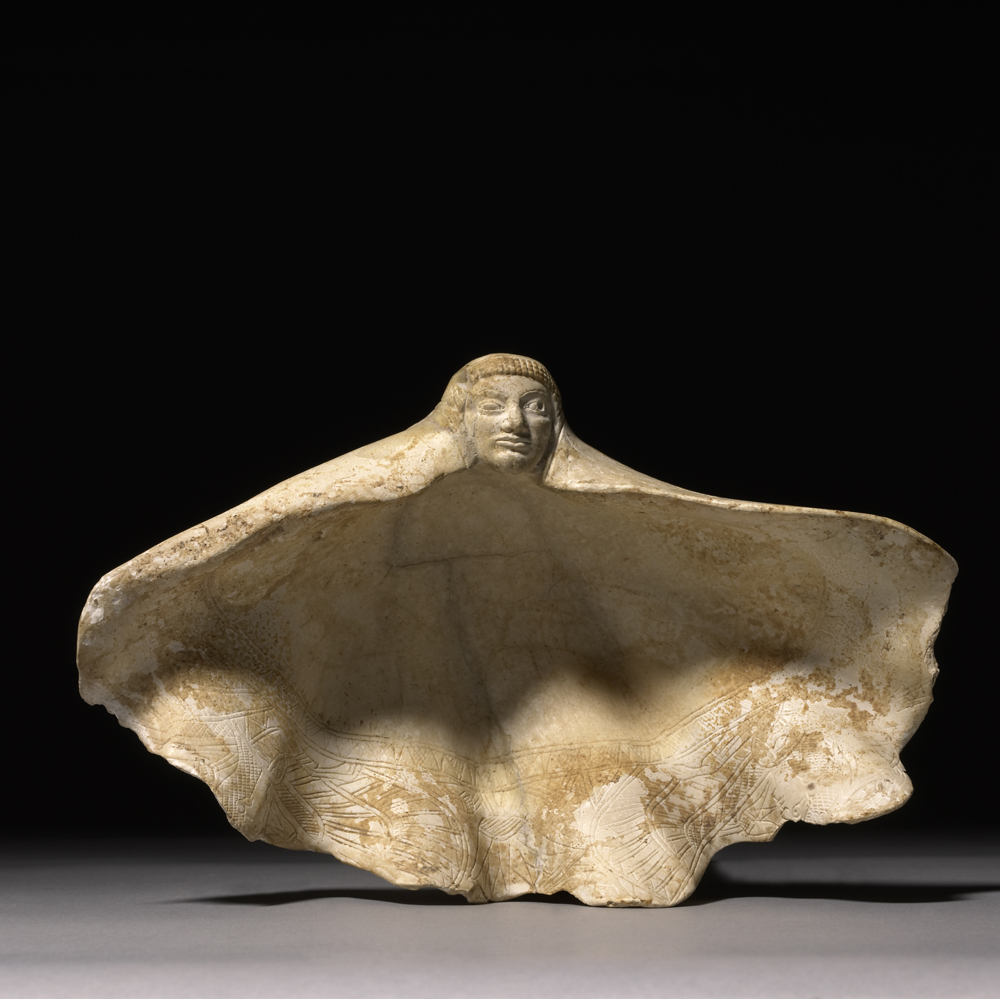Stop 18 - Carved Fluted Clam Shell
Imagine holding this clam shell in your hands. A delicately carved lady's face stares out at you at the top and as you turn it it's almost as if the ripples on the back of the shell are actually the lady's cloak being caught blowing in the wind. Or are they even the feathers of a winged bird like figure with a human head. Inside you can just about make out faint lines, faint decoration. They would have been a drawing carefully engraved inside the shell showing Egyptian sphinxes staring at each other with lotus flowers. Unfortunately the centuries have had their toll and you can barely make out this intricate design. This object was once used to mix makeup or hold perfume. It was found in a grave in Italy but to get to Italy the shell went on an incredibly long and complicated journey. The original animal once lived somewhere in the Indian Ocean or the Red Sea. It was collected, and then travelled all the way to what is today Syria or Lebanon or Israel or Palestine. There, Phoenician craftsman carved the shell into the delicate object you now see. Then it was taken by ship to be traded again across the Mediterranean to the Etruscans living in what is today Italy. This treasured object is one of many shells you can see here in this case. Sea shells from the Indian Ocean have been treasured possessions for tens of thousands of years. There's almost sort of a basic human instinct that wants us to pick up and collect shells and take them with us as mementos, as treasured items. As objects in this case show this is something which we've been doing for a very very long time. And you can almost see the whole history of this ocean through its shells, who has collected them, who has treasured them, and where they've travelled.

- Next Stop
-

Stop 19 - Dentalium Shell
next